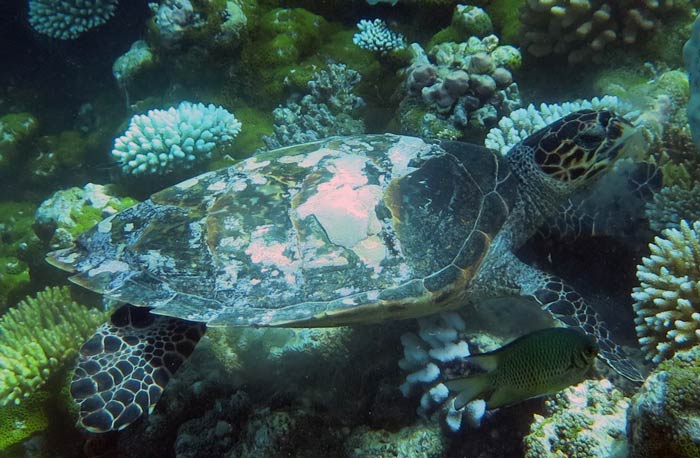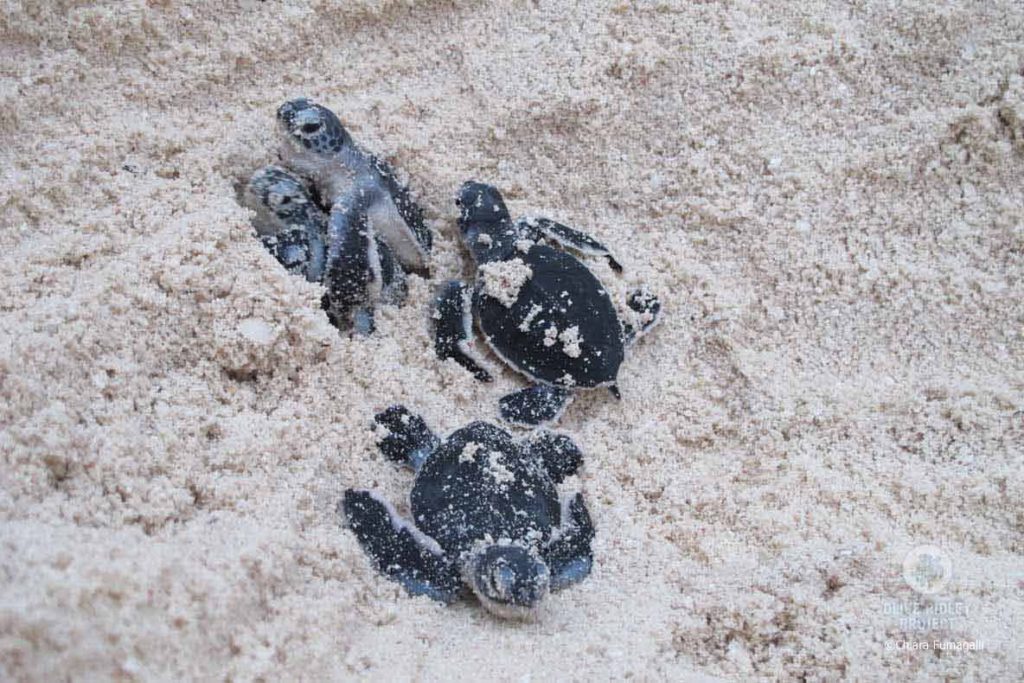Climate change can impact sea turtles in various ways. Firstly, increasingly warm seas pose a threat to vital sea turtle habitats and food sources, such as coral reefs. Cooler ocean temperatures are associated with higher productivity, thus providing more food for many organisms – including sea turtles. Warmer oceans and less food available leads to decreased nesting activity and fewer sea turtles being born. These effects have been monitored in some populations, e.g. in the Western Pacific Ocean and Western Atlantic.
Secondly, sea level rise can be very detrimental for sea turtle nesting beaches and it can be increasingly difficult for turtles to find appropriate spaces to deposit their eggs. This will also lead to decreased nesting activity and fewer sea turtles being born.
In addition to that, the sex of a sea turtle is not determined purely genetically as it is in humans: the temperature during the development of the embryo will determine whether a male or a female turtle hatches. Higher temperatures result in females, lower in males. Increasing sand temperatures on nesting beaches can therefore shift the sex ratio of hatchlings to almost entirely female. As a result, turtles can have a problem reproducing in the future.


References:
- Abella Perez E, Marco A, Martins S and Hawkes L 2016. Is this what a climate change-resilient population of marine turtles looks like? Biological Conservation 193: 124-132.
- Chaloupka M, Kamezaki N and Limpus C 2008. Is climate change affecting the population of the endangered Pacific loggerhead sea turtle? Journal of Experimental Marine Biology and Ecology 356: 136-143.
- Fuentes MMPB, Limpus CJ and Hamann M 2011. Vulnerability of sea turtle nesting grounds to climate change. Global Change Biology 17: 140-153.
- Pike DA, Antworth RL and Stiner JC 2006. Earlier Nesting Contributes to Shorter Nesting Seasons for the Loggerhead Sea Turtle, Caretta caretta. Journal of Herpetology 40: 91-94.

